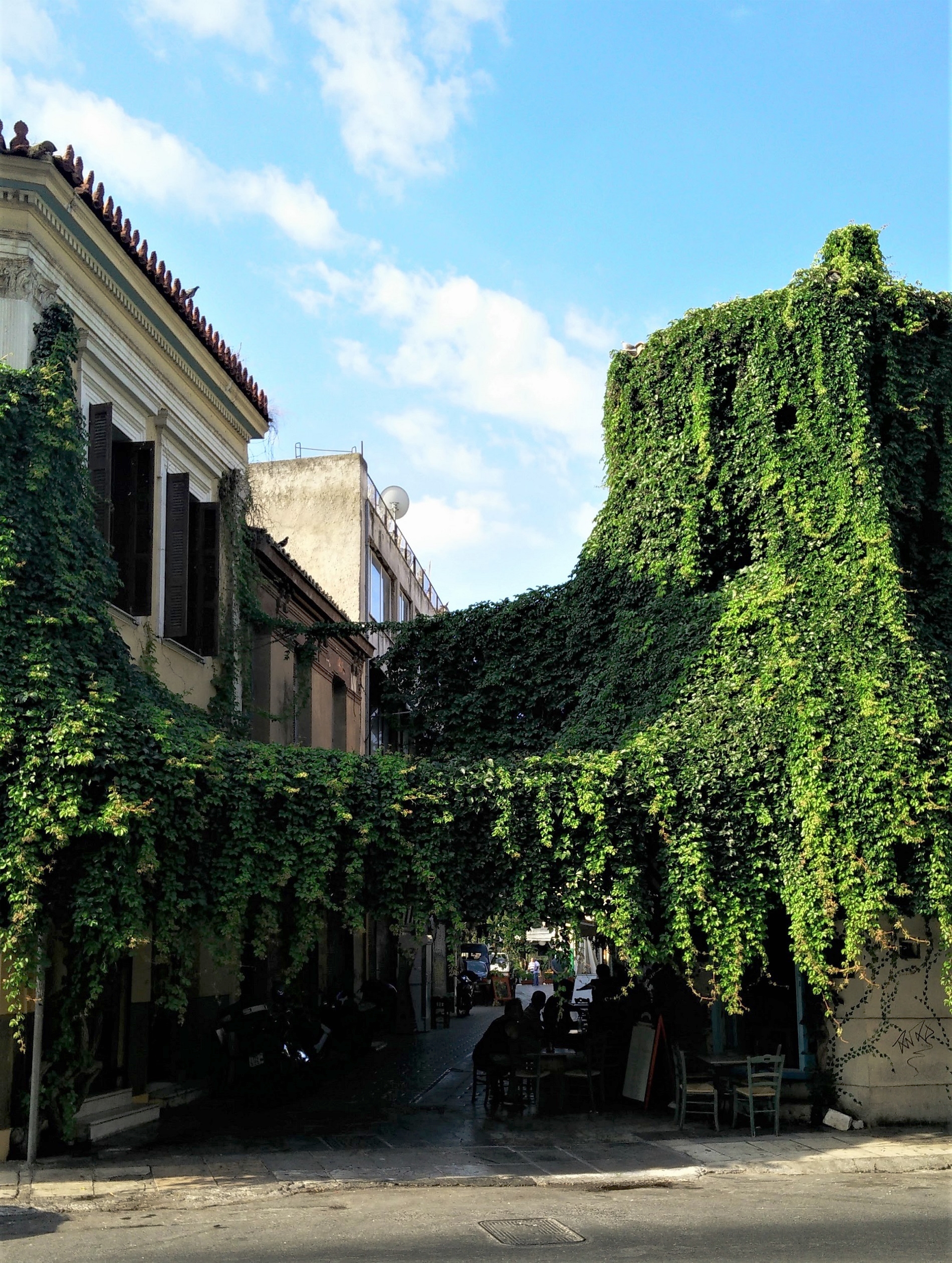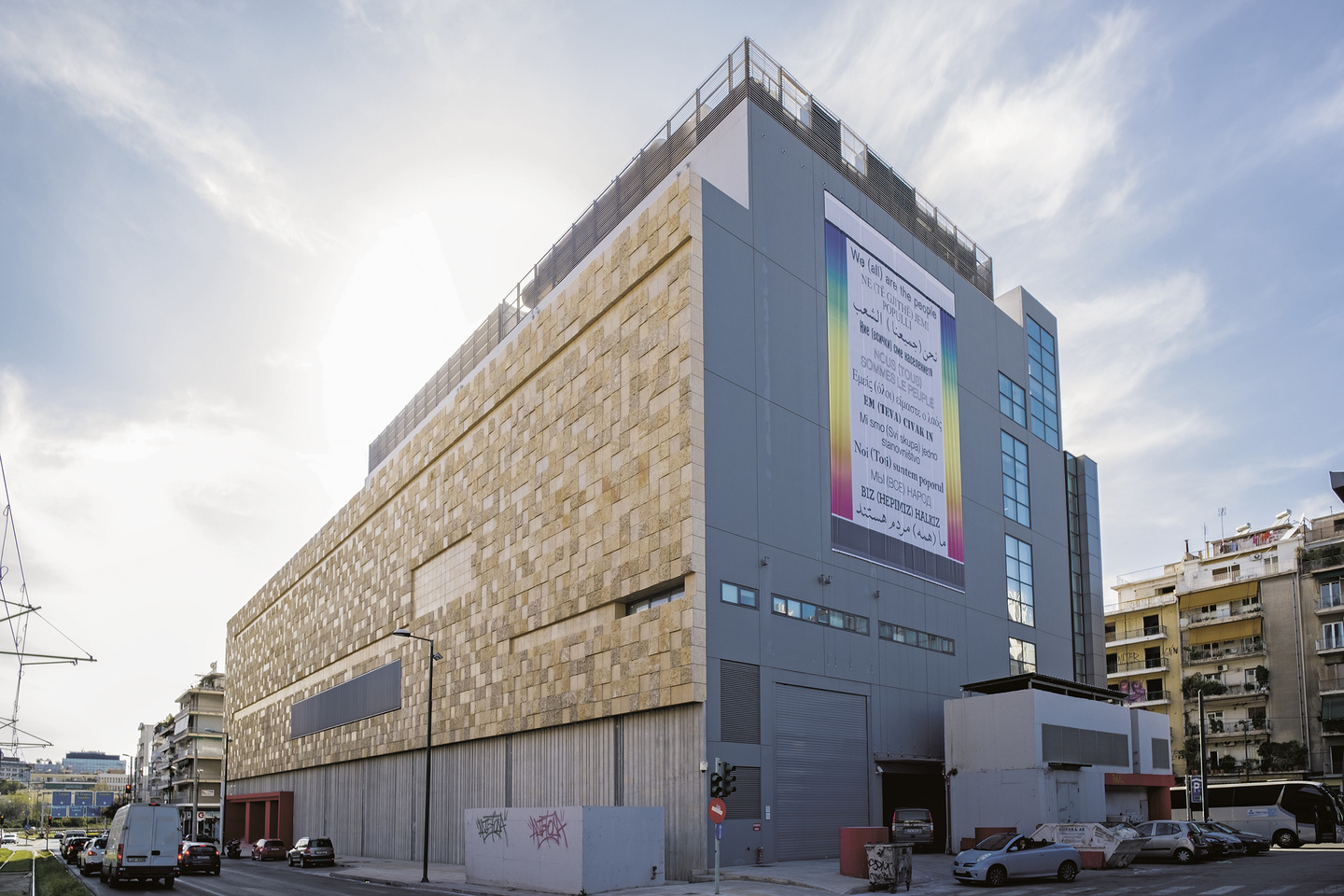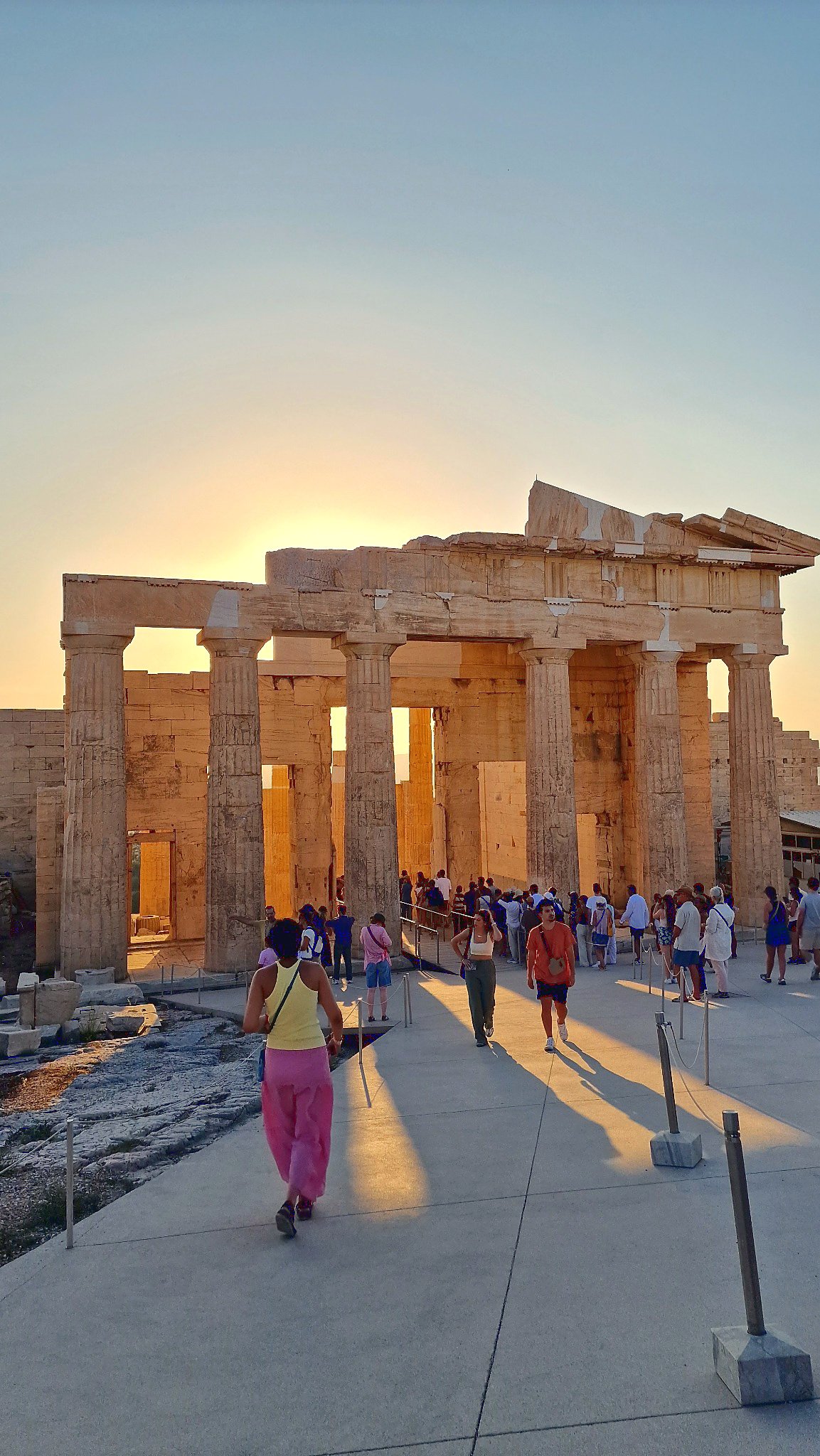The 6 most scenic neighborhoods in Athens
If you go around the city center of Athens, you can’t miss the tourists looking around, always searching for something. If you then ask some of them about what they’ve come to see in Athens, I bet you’d always get the same answer: Acropolis, Parthenon and all the other attractions and sights, most known among tourists. However, Athens has so much more to offer than just the same old mainstream sightseeing possibilities. Getting to know the 6 most scenic neighborhoods of Athens is therefore the real deal!
1. Plaka and Anafiotika
The Roman Agora. Source: Truevoyagers
Right beneath the Acropolis and reaching almost up to Syntagma Square you will find Plaka, the oldest neighborhood of Athens. In this part of the city you can do everything: walk along the narrow, paved streets, buy your souvenirs from one of the local tourists’ shops, admire the history all around you. To really learn the story of Plaka, you’ll need an experienced guide who will share with you the smallest detail. However, let me give you a heads up.
Old picturesque buildings in Plaka, Athens. Source: Truevoyagers
Once you’ve visited Acropolis, Parthenon and the museum, next destination is Plaka. Moving around through narrow streets, most of them marble-paved, you go past buildings of remarkable and uncanny architectural value. At its heart, you will find the two major streets, Kydatheneon and Adrianou, interconnected by picturesque alleys and pathways. Ideal pedestrian routes for walking around, undisturbed by traffic, guide you through the yet to be explored part of Athens; the part that brings together elements of Greek, Roman and Turkish origins. This is the perfect spot to capture the essence of Greece with the help of a local expert.
Adrianou pedestrian street in Athens. Source: Trip2Athens
Apart from the local souvenir shops, traditional restaurants and quaint cafes scattered all around, you will also come across numerous archaeological sites. Leaving Dionysiou Areopagitou Street and upon entering Vyronos Street moving towards Monastiraki square, the first monument you’ll see is the Choragic Monument of Lysicrates. The monument was built in 335/4 BC and by the sponsor of dramatic performances in honor of their win. Then, you will find the Roman Agora, where you can also admire the Tower of the Winds, the Fethiye Mosque and the Gate of Athena Archegetis. Opposite from the Tower is the Gate of Medrese, originally a theological school and a prison during the Ottoman rule in Greece. Next to it there is the Museum of Greek Folk Musical Instruments, which presents the musical tradition and history of Greece.
Last part of your trip around Plaka should be Anafiotika. Just beneath the eastern side of Acropolis and above Plaka, there lies the small neighborhood built by stone masons and architects coming from Anafi. Wandering around its narrow alleys, you get to the spot with the most spectacular view of Athens and Lycabettus right at your feet. If you want to experience what it feels like to walk the streets of any island of the Aegean Sea, you don’t have to look far. All you have to do is to visit Anafiotika.
Anafiotika neighborhood under the Acropolis. Source: DiscoverGreece
2. Monastiraki and Psirri
Lively and buzzing atmosphere at Monastiraki square. Source: Wikimedia
Leaving Plaka and Anafiotika behind and walking down Areos Street, passing by Hadrian’s Library, you will find yourself almost in the middle of Monastiraki Square. The square is the connecting point of multiculturality. There you will witness the way people of different cultures, religions and mentality come together and co-exist all over the place. The square is surrounded by little shops and eateries, but you can also admire the Tzistarakis Mosque, which is a part of the Museum of Greek Folk Art. If you get the chance, visit the small Church of the Pantanassa (or of the Dormition of Theotokos), facing Monastiraki station.
Heading to Psirri neighborhood in Athens. Source: Truevoyagers
Next stop: Avissinias Square. The square is located near Monastiraki Square, just a few meters down Ifaistou Street. This street is well-known for its flea market (resembling more to a “bazaar”) of shops lined next to each other, offering everything you can think of. Avissinias square is part of the flea market and one of the most remarkable places of Athens you shouldn’t miss. It is full of antique shops, displaying everything from furniture and decorations to clothes and books. Among the locals, the square is also known as “Yussuroum”, which was named after the Jewish antique dealer Noah Yussuroum, who settled with his family in Monastiraki in the mid-19th century.
Exiting Avissinias square and crossing Ermou Street, you reach your next destination, the wondrous area of Psirri. The area is widely known both by locals and tourists for its café-bars and taverns, which offer live music spectacles, and all kinds of eateries. If you visit Athens, you cannot just skip this district and not admire its history and picturesque scenery, reminding of an Athens of the past with modern traits scattered all over. Wander around its alleys and streets on foot or by riding a handmade wooden bike and surrender to the history Psirri has to offer you.
3. Keramikos and Gazi
Urban feeling in Keramikos neighborhood. Source: Truevoyagers
Between Ermou, Pireos and Asomaton Streets, you will come across the archaeological site of Keramikos (which is the Greek word for pottery). During the ancient times, the area was originally a settlement of potters and vase painters due to the rich clay deposits of Eridanus river. However, those parts located near the riverbank suffered from the constant overflowing of the river. This rendered the place difficult to work and live in and it was therefore converted into one of the most significant burial grounds of ancient Athens.
Nevertheless, Keramikos today is a vast district of modern Athens, next to Gazi with the former gas-works of Athens, offering many opportunities for fun, entertainment and, of course, a vivid nightlife. Many people, even locals, confuse both districts to be the same due to the Metro Station’s name ‘Keramikos’ with its exit to the Gazi area. In Gazi (or, perhaps, Keramikos-Gazi) you will find many café-bars, but even more clubs that can cover everyone’s music taste. Taverns and restaurants can be found at the most extraordinary places, from the streets even to underground places that can be discovered only by an insider’s information.
The view of Technopolis at night. Source: AthensGlance
Finally, an important site you shouldn’t miss when visiting Keramikos and Gazi is Technopolis, the City of Technology. Technopolis is one of the most famous cultural venues today and an industrial museum, dedicated to the memory of Manos Hatzidakis, the great Greek composer. Here takes place a wide range of events, such as seminars, music concerts, exhibitions and so on, either in open space or in one of its buildings, each named after a renowned Greek writer: Andreas Embiricos, Angelos Sikelianos, Yannis Ritsos, Kostis Palamas, T. Papatsonis, Konstantinos Cavafis, Costas Varnalis.
Discover the best of Athens in one day!
4. Koukaki
The National Museum of Contemporary Art in Koukaki. Source: Documenta
The one thing I always urge friends and acquaintances to do when in Athens is to visit the neighborhood of Koukaki. Where? Just on the other side of Acropolis, near village-like Plaka -so you don’t have to walk that much, if you avoid walking whatsoever- and next to Filopappou Hill. Koukaki might not be as picturesque and as glamorous as other Athenian neighborhoods. It promises, however, to dazzle you with its alternative atmosphere right in the middle of the urban landscape and its ever-changing daily routine.
Here you will find a peaceful place, a retreat from the mindless everyday rhythms of the city. Wandering around its pedestrian-friendly streets, you can explore unique little shops, traditional and modern cafes and bars, and museums you should definitely visit. First is the National Museum of Contemporary Art, exhibiting a collection that is continuously enriched by Greek and foreign artists. Second is the Ilias Lalaounis Jewelry Museum with a permanent collection of jewelry and micro sculptures, an incomparable representation of the jewelry art in Greece.
Enjoy your coffee at Koukaki's various quaint coffee shops. Source: Exodos
To fully experience the alternative side of Koukaki you have to enjoy a well-brewed espresso at one of the cafes of Koukaki Square. Maybe you’d like to hit the bar and grab a drink at night. Either way, this is the place you can make the most out of it.
For the architecture aficionados, Koukaki is the neighborhood that maintains the neoclassical style of old buildings, remnants of a long-forgotten era of unparalleled beauty. For those of you that consider walking the best way to really learn a place, then make your way around the neighborhood. When you’ve seen just enough, it is time to visit Filopappou Hill and connect with nature. Take a walk towards the Filopappos monument, the ancient Koilis street and Socrates Prison, and go past other tourists, dog walkers and joggers while listening to the stories of gods and lovers.
5. Exarcheia
In the alternative neighborhood of Exarcheia in Athens. Source: Truevoyagers
After exploring the busy Syntagma Square and the quiet National Garden, where your kids can transform into heroes of Aesop’s fables, you can move on to Exarcheia. Located between Kolonaki and Alexandras avenue, it is known as the student area of Athens. The area has a lot to offer and brings together the old, the alternative and the modern, all in a bohemian-like environment. Exarcheia has nothing to envy in comparison to other neighborhoods of the rest of the city. It is famous for its arty bars, friendly and tranquil cafes and many publishing houses and bookshops, most of which are second-hand stores offering products at great prices. The locals, however, will give you a more ‘ill-famed’ side of the area: the riotous, rebellious and dangerous one during demonstration days, something you’d better avoid.
There are few things worth visiting when in Exarcheia. One of the neighborhood’s main attractions is the National Archaeological Museum, the largest museum in Greece. Counting more than 11,000 exhibits, it lets you explore the development of the Greek civilization from prehistory to late antiquity. Another interesting attraction is the Epigraphic Museum, the largest of its kind with inscriptions made on stones, offering a better understanding of the ancient Greek history.
Nevertheless, despite not having much to offer of archaeological significance, Exarcheia has its own history. The neighborhood’s center is Exarcheia Square, always full of people sitting on some bench or just passing through. Around the square there are small cafes and fast-food restaurants, offering a great variety of food, beverages and spirits. What you should search for in Exarcheia are its numerous taverns. Their culinary options, accompanied by a refreshing beer or some wine, are the perfect way to experience Exarcheia to its fullest.
6. Kifissia
The natural element among human constructions in Kifissia. Source: Truevoyagers
If you are of those people that prefer something away from the vigorous and exhausting city center of Athens, then Kifissia is there just for you. Taking the train from Monastiraki station and travelling towards the northern part of Athens, your last destination is Kifissia. The neighborhood is well-known for its natural beauty and how well it maintains the natural element among human constructions.
Once you get off the train, you will see the Park of Kifissia, where the Annual Flower Show is hosted every year since 1937, usually in April or May. Crossing the park, you will soon arrive to the heart of Kifissia, a place full of people, shops, cafes, restaurants, bars and, honestly, everything you can imagine. You can visit the Goulandris Natural History Museum working on the study and protection of the natural environment, and the OTE Telecommunications Museum.
It is the perfect place for families and nature enthusiasts that look for something other than the ordinary. An ideal place to stay in during your vacation in Athens.
Did you like our post? Pin it!
So, which Athens neighborhood is your favorite? Let us know by commenting below!
Words: Spyros Balesias





































